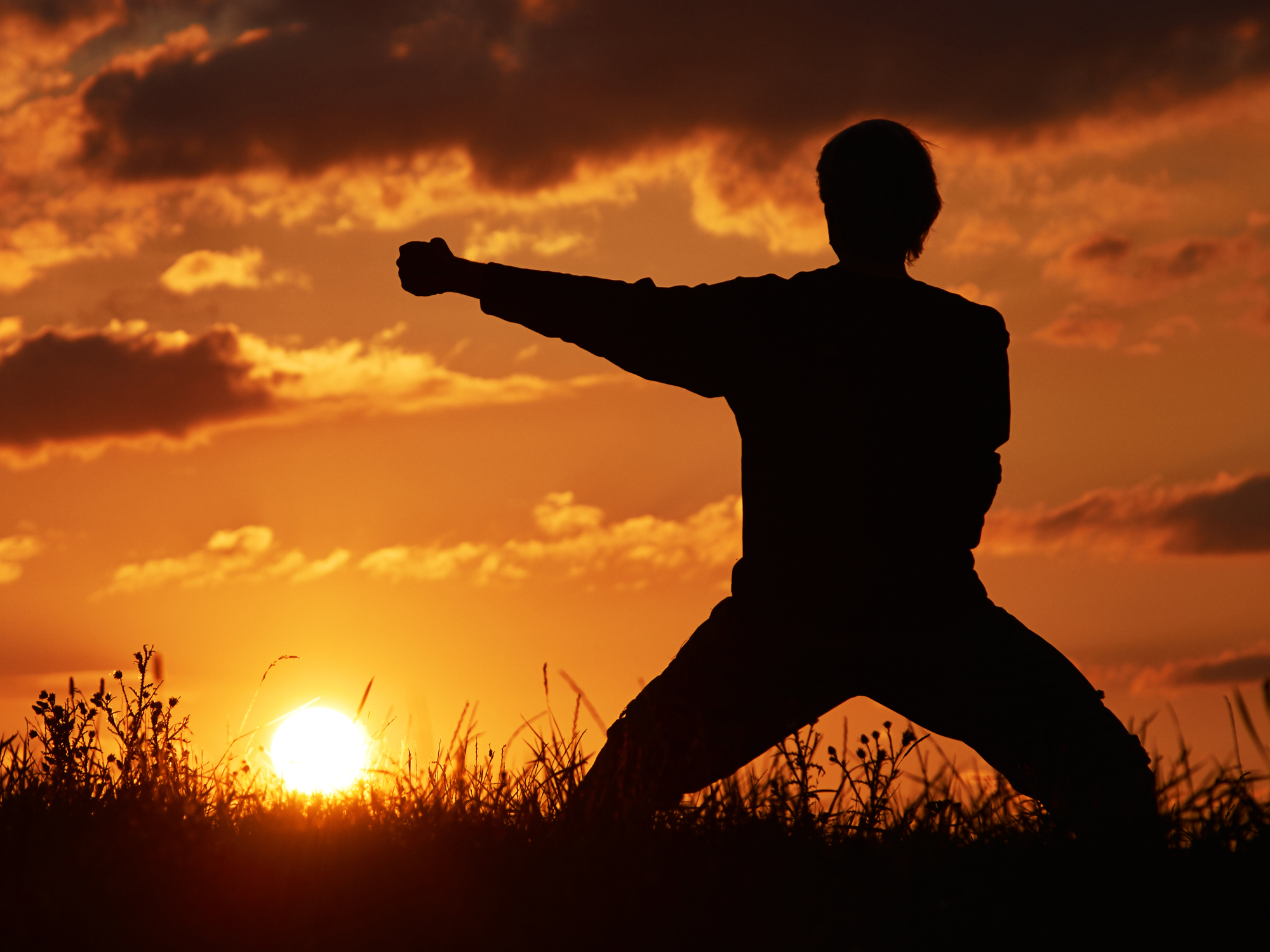Get Easy Health Digest™ in your inbox and don’t miss a thing when you subscribe today. Plus, get the free bonus report, Mother Nature’s Tips, Tricks and Remedies for Cholesterol, Blood Pressure & Blood Sugar as my way of saying welcome to the community!
The Zen warrior’s path to whole health

Health is more than the mere absence of disease.
To truly be healthy one must be physically fit, limber, possess a full range of motion, be at a good weight, have strong cardio-vascular conditioning, possess a focused mind, be playful, and silent at times, have freedom from fear and be self-confident.
There are many diets and exercise programs, meditation and yoga practices, but individually these will not bring you to optimum health. I believe that a traditional martial arts practice brings all of the elements together that can guide you to optimal health. Let’s look at the training of martial arts and their health benefits…
Cardiovascular conditioning
Because martial arts are a physical activity there is great benefit to the heart and lungs. The heart rate is elevated and then sustained for various periods of time. There is both prolonged and short-duration training, exposing your body to various types of cardiovascular pressures and development. Think of a marathon runner versus a sprinter… versus a jogger… and you will see the different ways the martial arts train the body for different duration needs.
Most classes begin with a warm-up to get the blood pumping and the joints moving freely. This is followed by repetition of single and combined movements. Some styles include striking of targets and hanging bags, while others do dozens of repetitions of techniques which push the heart and lungs to work.
All of this is terrific for the lungs, the heart, sweating out of toxins, and a good fight against heart disease.
Range of motion and flexibility
Unlike many sports and activities, martial arts by their nature place your body in many different positions and postures. Each leg and hand is placed in the lead position and each side is worked physically so the muscles and tendons are stretched and developed.
The body moves in all eight directions, linear and circular, helping to create a balanced range of motion and free movement capacity. There are stretching exercises for the arms and legs and shoulder, neck and back. They are done statically at times and other times dynamically.
All of this helps the body release its held tension and tightness. It works through adhesions of connective tissue from too many hours/years of sitting and moving in only very limited directions. It makes the body feel supply through the increased movement of the joints and muscles.
Reflex control and coordination
Martial art training teaches reflex control and coordination through the practice of single movement and movements requiring coordinating of arms, hands, waist and feet. There is also a timing and depth perception training when learning to apply the techniques of self-defense against a partner in class.
In addition, there are short, fast techniques and longer, slower ones and so the practitioner develops both fast-twitch and slow-twitch muscle control.
All of this is terrific for developing controlled reflexive action, hand-eye and hand-foot coordination, muscle control, and action perception. These attributes are necessary for sustained quality of life in senior years and for improved experience of life at any age.
Strength and endurance
Because the body is set into stances both high and low, between two legs or balancing on one, there is strength and endurance training in the legs. The arms also move fast and slow and hard and soft, developing strength and endurance there, too.
The fast repetitions are akin to the HIT training, wherein high-intensity training develops a certain level of fitness, cardio and muscle burn. The longer duration exercises vary in speed and develop muscle and cardiovascular endurance to keep moving at intensity over time.
Mental focus
One of the greatest benefits of traditional martial arts is developing a meditative mind. Many arts, especially those of the Zen tradition, include zazen or seated meditation as part of every class. Others of the Taoist tradition include standing stillness exercises to quiet the mind and link the mind and body as one.
Arts like tai chi are a de facto moving meditation. And karate and kung-fu styles have as their base sets of “forms” or choreographed sequences of movements that last from a minute to 10 minutes or more to perform—like this one. The self-discipline needed to perform these movements in the right sequence, at the correct tempo and cadence, and to remain focused takes deep concentration. This concentration is developed over time via repetition, and the practice of the movements becomes a form of moving meditation where thoughts stop and action leads the way; a concept known as mu-shin or “no mind.”
Meditation, whether in stillness or movement, is a boon to health. Science has discovered that meditation reduces stress, induces relaxation, helps us process thoughts and beliefs and builds gray brain matter.
Intangibles
There are many intangible benefits of martial arts training that are powerful sustainers of wellness. These include a release of fear through development of self-defenses skills; a raise in self-confidence, which leads to belief that you can do more and can try anything; a sense of accomplishment and identity as part of your martial art “family.”
The traditions of martial arts of Japan, Okinawa and China are steeped in tradition, respect, discipline, and hard work. There were no belt exams to pass to achieve a level and show it with an external symbol (i.e., the colored belt). There were no competitions to create a drive of me against you. There was, instead, a family structure with a grandmaster, master, teacher, seniors and juniors; much like a family with several generations of elders and then siblings and cousins.
Many who train in martial arts report they feel better about themselves and this helps them feel better about their environment and external elationships. All of this helps support a feeling of overall wellness and quality of life.
Conclusion
In my estimation, the Zen Warriors knew something vital: how to engage in a comprehensive mind/body/spirit practice that not only protected them but more often led to development of optimal health. One practice, many results. Unfortunately, these days the traditional schools are few and far between, having been replaced with what is referred to as the “McDojo” or commercial kids-focused schools that promote quick promotion and birthday parties and winning of patches, or the hard-core MMA facilities that focus more on winning competitions.
I am a fan of traditional martial arts for so many reasons. If you are looking for an activity to change your life, this may be it. Be a zen warrior and see how your life can be transformed.












